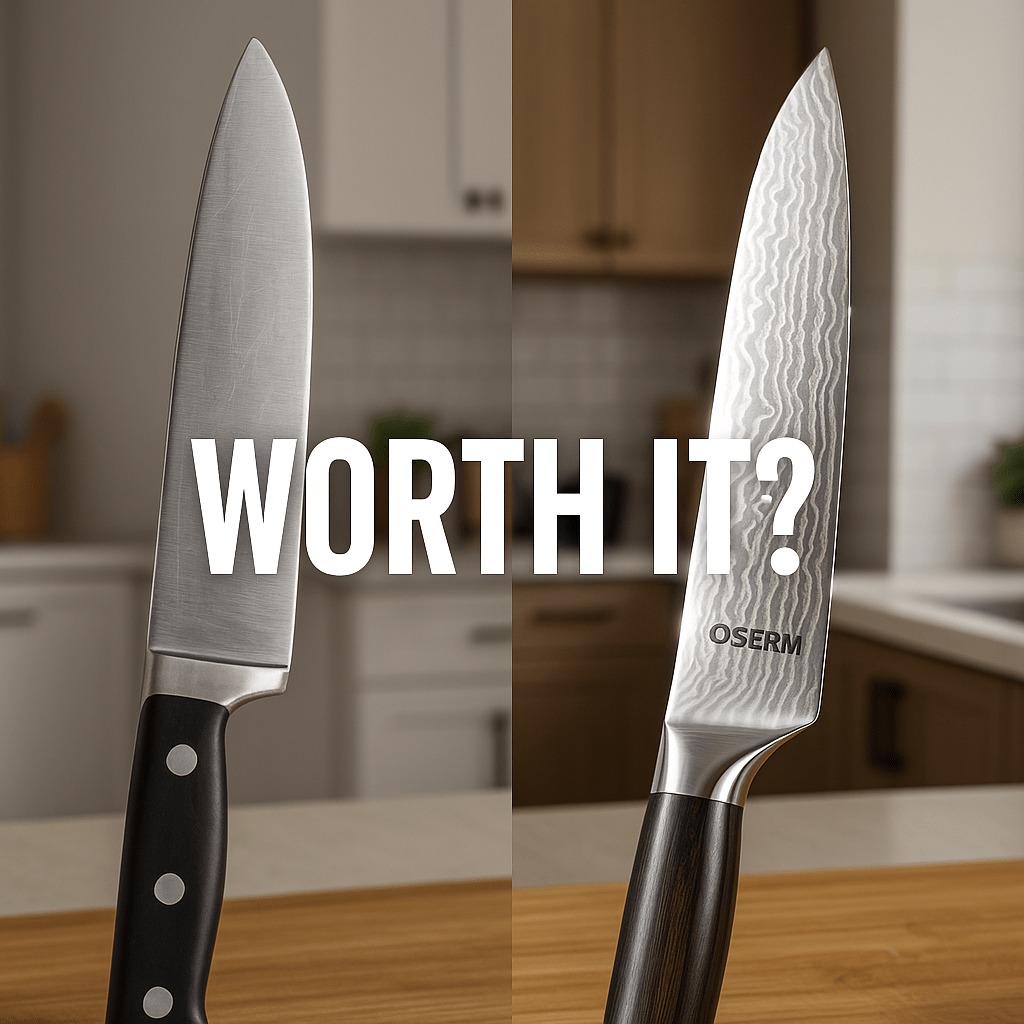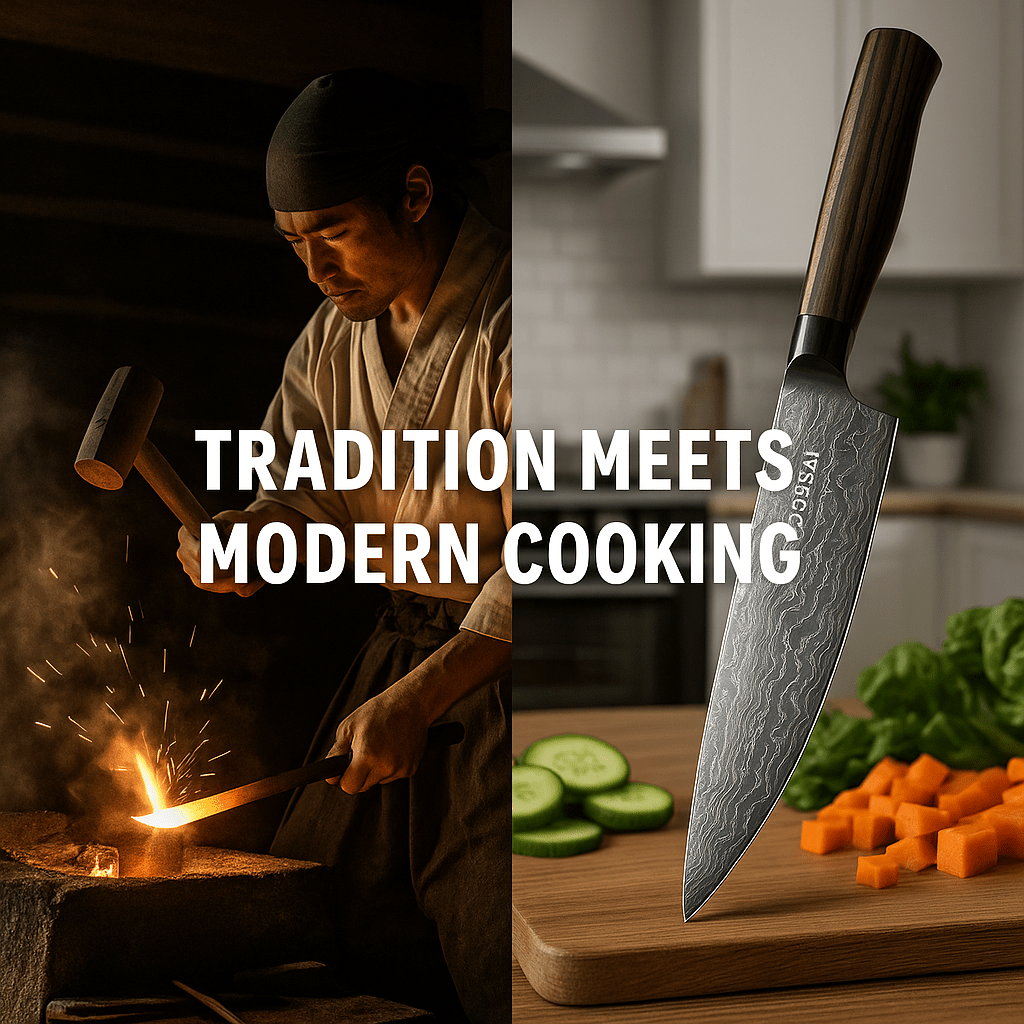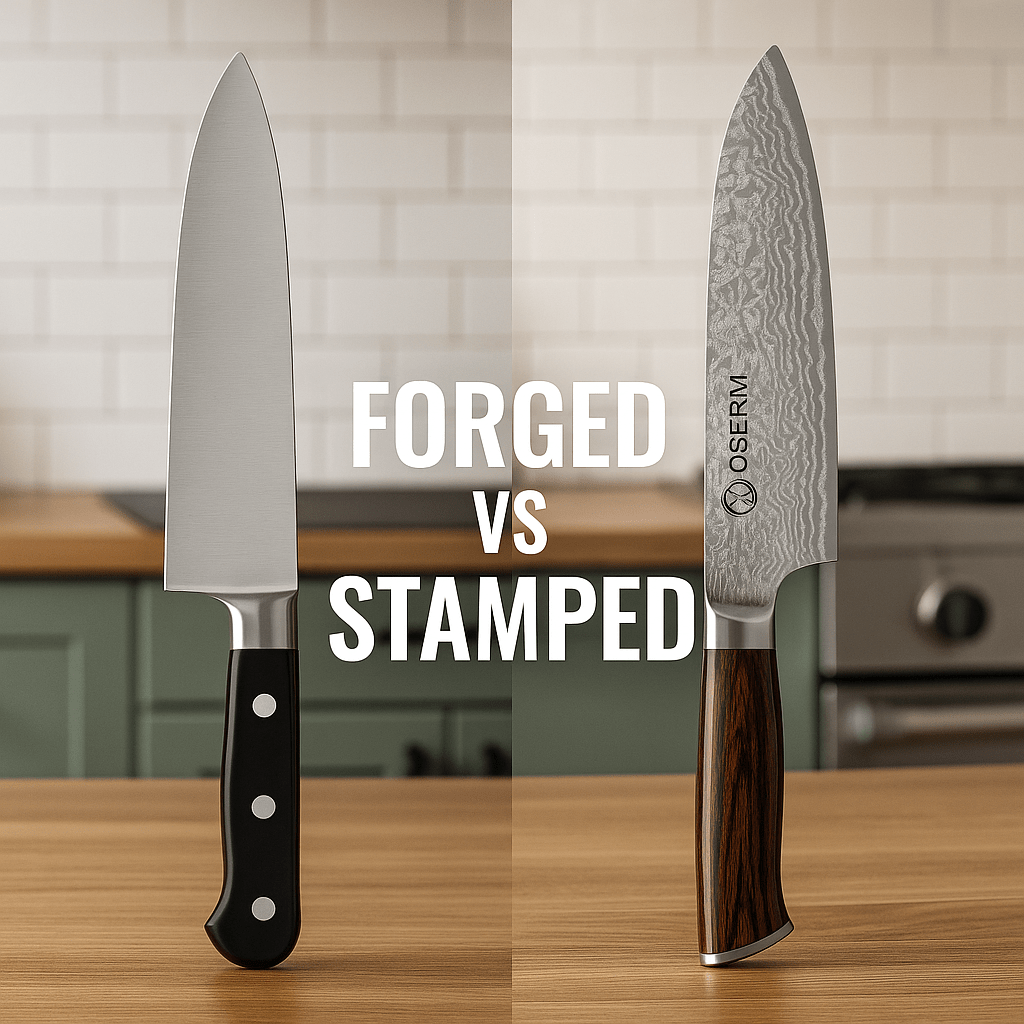
Are Expensive Knives Worth It?
When shopping for kitchen knives, you’ll notice a wide price range—from $20 budget knives to $200+ premium Japanese blades. Many cooks ask: are expensive knives really worth it? Or are you just paying for branding and aesthetics? Let’s break down what makes a knife expensive and whether the investment pays off.
What Makes Knives Expensive?
Several factors drive up the cost of a kitchen knife:
- Steel Quality: Premium knives use high-carbon steels like VG-10, SG2, or layered Damascus steel for superior sharpness and edge retention.
- Craftsmanship: Handmade or precision-forged knives involve skilled labor and traditional techniques, unlike mass-produced stamped blades.
- Design and Aesthetics: From Damascus wave patterns to resin-wood handles, expensive knives double as works of art.
- Durability: High-end knives are built to last for decades with proper care, reducing the need for replacements.
- Balance and Comfort: Ergonomic handles and balanced weight make cutting smoother and safer.
The Advantages of Expensive Knives
- Sharper Edges: Premium knives are sharpened at finer angles (12–15°) for precision cuts.
- Longer Edge Retention: They stay sharp much longer, requiring less frequent sharpening.
- Improved Safety: A sharp knife is a safe knife—less force needed means fewer accidents.
- Cooking Efficiency: Better knives reduce prep time and improve presentation of ingredients.
- Emotional Value: Many home cooks find joy in using a beautiful, reliable tool daily.
The Case Against Expensive Knives
Of course, premium knives aren’t for everyone. Some drawbacks include:
- High Initial Cost: Paying $150–300 upfront can feel daunting.
- Maintenance: High-carbon steels require more care (hand-wash, no dishwasher, oiling).
- Overkill for Casual Cooks: If you rarely cook, a mid-range knife may be sufficient.
Cheap vs Expensive Knives
To understand whether expensive knives are worth it, let’s compare:
| Feature | Cheap Knife | Expensive Knife |
|---|---|---|
| Steel | Basic stainless steel, dulls quickly | High-carbon VG-10 or Damascus, holds edge |
| Sharpness | 15–20° edge, less precise | 12–15° edge, razor sharp |
| Durability | May last 1–3 years | Can last decades with care |
| Appearance | Plain, utilitarian | Beautiful, often gift-worthy |
When Expensive Knives Are Worth It
- Frequent Cooks: If you cook daily, the efficiency and safety justify the investment.
- Gift Purchases: High-end knives in elegant packaging make impressive wedding or holiday gifts.
- Long-Term Thinkers: One great knife that lasts 20 years is cheaper than replacing cheap knives every few years.
- Food Enthusiasts: For those passionate about cooking, a premium knife enhances the entire experience.
When They Might Not Be Necessary
- If you only cook occasionally or prepare very simple meals.
- If you’re on a tight budget and need functional tools over aesthetics.
OSERM’s Perspective
At OSERM, we believe expensive knives are an investment, not a luxury. Our Damascus knives combine VG-10 steel cores with 67 layers of cladding, giving both beauty and function. They come in gift-ready boxes, making them suitable for both home kitchens and special occasions. While the upfront cost is higher, the long-term value and daily satisfaction are undeniable.
Conclusion
So, are expensive knives worth it? The answer depends on your cooking habits. For passionate home cooks, professionals, and those seeking quality gifts, the answer is a resounding yes. For occasional cooks, a mid-range knife may suffice. But one thing is clear: a great knife transforms the cooking experience and pays for itself over time.
Weekly Deal 🔥
Experience the difference of premium Japanese craftsmanship. OSERM’s Damascus Knife Collection blends sharpness, durability, and elegance—worth every penny.
You Might Also Like
- Cheap vs Premium Knives – What’s the Difference?
- The Truth About Damascus Knives – Worth It or Not?
- Knife Sets vs Individual Knives – Which Saves You Money?
Tags: expensive knives worth it, premium vs cheap knives, OSERM knives, Damascus knife value






